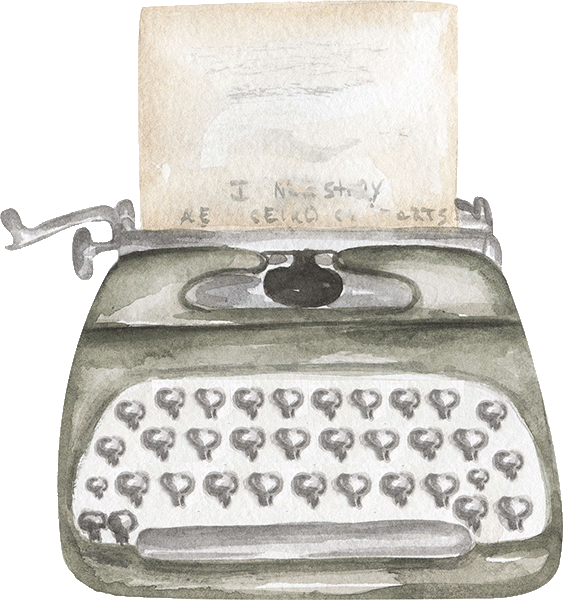Confession: I don’t actually have five ‘secrets,’ per se. But I have a bunch of stuff I think people should remember when writing description.
So don’t actually take my advice.
That’s right.
Just read it, like it, comment on it … then forget it.
It’s best for you and the posterity who would otherwise have to read through your awful descriptions right in the middle of your amazing novels.
Seriously, though, ladies and gents, I’m doing my best here to tell you everything I know about description.
Well, not everything.
Just five things … to keep in mind … when describing stuff.
And by stuff I mainly mean scenery, people, etc.
So. Let’s get going.
1: Describe the Action
I know people are always talking about not using too many adjectives (at least, people are always telling that to me), but add a couple adjectives to an action. For instance, “She picked up the phone with her slender fingers and place it against her ear while she dialed, brushing back her shiny black hair to do so.” See? You just got in that she had slender fingers AND that she has shiny black hair. Cool, right?
2:
WriteDESCRIBE What You Know
I get sick of hearing this. What’s the imagination for if this is true? But with description, I’d say this definitely applies! I know, I know. Not all of us can take a trip to Scotland or Belgium or wherever your novel is set. I sure can’t! That’s what Pinterest is for. 😉 But … oftentimes it’s nice to describe the cool sea breeze which you know so well from visits to the beach, the cry of the seagulls, the way the waves crashing in your ears is peaceful and exciting all at once. If you know it, your descriptions will be all that much more vivid. Also, describe what the readers know. Try using comparisons that anyone will get. I mean, don’t go around saying “it was about as big as a tree,’ but … XD
3: Read the Classics
Admit it: many classics have the best description! Sure, a little excessive sometimes … but still. Best. Description. Ever. I particularly recommend Elizabeth Goudge, Gene Stratton Porter, and Charlotte Bronte for amazing (oft-excessive …) description. No need to imitate the length, of course. I suggest taking a portion of description from a classic and editing it. Make it more compact, more modern. Rewrite it in your style. I find I automatically edit books in my head as I read anyway. XD
4: Use All Your Senses
The way to ‘show not tell’ in description is to use your senses rather than just telling people what things look like. I don’t have much to say as Morgan Dusky @Studies in Character wrote a particularly brilliant post a while back about this (and description in general). You can find it here.
5: Don’t Go Overboard
As I mentioned before, the classics have amazing description … for paragraphs … and paragraphs … and paragraphs. Your readers are gonna shut the book! I know, I know. Thousands of people apparently waded through the classics … but that’s because they’re old. People used to think that level of description was a sign of good writing. Because if you’re bored, obviously it must be a good book. And most people just read them now because they’re classics. Or because they see the hidden gems behind pages worth of description … like me … Do you intend to publish your books a hundred years from now when people can appreciate them? I thought not …
And that’s honestly the best I got! What do you think? Am I spouting nonsense or am I making sense? How do you handle description? Do you describe stuff too much? Too little? How do you fit description in?
~Kellyn Roth


26 Responses
Sounds good to me! I have a terrible time making my descriptions ‘un-blatant’, like the way you were describing the slender fingers and the telephone.
Darn it, I forgot to describe the telephone! Who cares about the slender fingers?! WHAT ABOUT THE TELEPHONE!?!?! 😛
Great post! Those are all excellent points.
(And thanks for the link!)
I agree on all of your tips. It mystifies me how such good books have chapters of boring descriptions. (Have you ever read The Hunchback of Notre-Dame? Now there were some yawn-worthy descriptions!) I wouldn’t do that anyway, since it’s boring. 😛 As for tips one and two, I work on them in my writing. Those are things you can only perfect with practice. 😉
CutePolarBear
Yep, it does require a lot of practice! I know I need a ton of practice! Book and books of practice!
I’ve never read The Hunchback of Notre-Dame. I suppose because I know how it ends so it’s not gonna be quite so exciting. 😉
I know, I was actually excited about what was going to happen, and then I read it. I think I felt like throwing the book across the room. 😛
CutePolarBear
I probably would throw the book across the room. HOW DARE YE DO SOMETHING I DIDN’T WANT YOU TO DO!?!?!
Yup! XD Of course, throwing the book across the room might damage it….
CutePolarBear
Those are great tips! Another good (slightly heavily) description-laden book is Anne of Green Gables – have you read it?
I have! I didn’t really notice the description in Anne of Green Gables as much, though. But then I haven’t read it in ages … and I’m used to description.
Well . . . I read it when I was eight, so the description may have seemed a lot more then than there really is. 😉
I read it when I was tenish for the first time, but then my mom read it aloud to me and that’s a lot different than reading it yourself!
True!
Great post! 😉 Number four is so important! That’s the one I go by. 😉 I also put myself in the observer’s shoes and this usually keeps me from info dumps. We don’t immediately know a character’s age, exact height, and favorite kind of tea just from walking up to them (unless we’re are Sherlock Holmes). 😉 That sort of information comes out during conversation, and we notice appearance from actions. I also like introducing character’s names naturally in conversation, but there is debate about whether or not that should be stated right off the bat. 😉
“Was he about the size of a small tree … or about the size of a medium-sized tree?” 😛 Sorry … Studio C … XD
Seriously, though, that’s a good point. I tend to adjust how my characters get described depending on the POV.
For instance, my character Judy describes her mother as absolutely beautiful in sparkly clothes while some of the glow goes out the descriptions from Adele’s POV (because she has some things about herself she’d like to change, like most people).
Oh, yes… Studio C. 😉
That’s awesome! I’m having an interesting time writing “romance”. I’m actually leaving some things about appearance out until the other person notices them. For instance, the guy never has an eye color until it’s important. 😉
Yeah, a lot of the time looks don’t matter, although I guess it probably gives the reader a better idea of who she’s dealing with. My friend Bay (it’s Bailey; she’s eccentric 😉 ) says she always make up a mental image of a character in the first couple chapters, so if I don’t describe them, she’s going to have an image which I’ll only destroy later … so I have to describe my characters in the first chapter for her. 😉 But most people don’t have friends like that … 😛
That’s a really good thing to think about. I’ve been describing most things, but I also want to save some for later if that makes any sense. 😉
Yep, that’s a great idea! There’s one character in At Her Fingertips that I think I need to describe less so I don’t give away a plot twist. :O
Haha yes im eccentric but u know you love me!
But srsly! I cant wait a few chapters to know what the charact we rs look like! I must make a mental image now! Haha!;) like at the beggining of tlotv I thought adele was blonde…and then you dropped a black-haired-adele bomb on me in like the second chapter! Haha!;)
(I feel like im butting into the conversation commenting right here!)
It just placed my comment at the botom…nevermind I aint butting in no mo! 😉
xD Good for you …
I’m sure it’s all right. 😉 Yeah … I guess I can kinda see a blonde Adele … Now I’ve got the cover, though, so how can you possibly make a mistake?! 😛 Jk.
Haha yeah no mistakes now!!
Judy in the cover looks eggzactly how I imagined her tho!!! Which is so cool;) I love when that happens!
Yep, I love Judy on the cover, too. 🙂